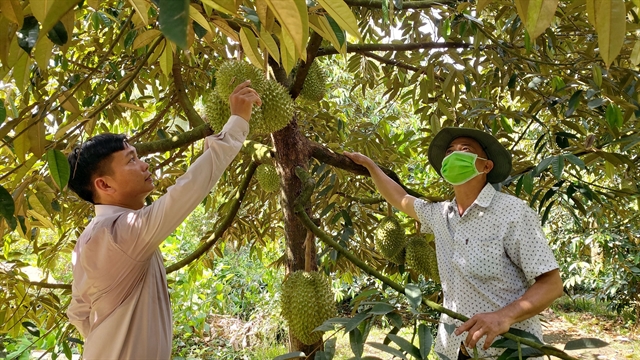 Economy
Economy

.jpg) |
| Durian is ready to be harvested in Tiền Giang. Thailand has increased its orders for frozen durians, leading to a significant rise in export volumes. — VNA/VNS Photo |
HÀ NỘI — In the first eight months of the year, fruit and vegetable exports from Việt Nam reached nearly US$4.6 billion, a 29 per cent increase year-on-year, with Thailand expected to continue recording the impressive growth of imports.
Thailand experienced the highest growth in imports of Vietnamese agricultural products during the first seven months of the year, according to figures released by the Việt Nam Fruit and Vegetable Association based on customs data.
The country, which previously ranked sixth after Japan and Taiwan (China), has climbed to fourth place with a seven-month export value of $123 million, a 70 per cent increase compared to the same period last year.
Ngô Tường Vy, CEO of Chánh Thu Company, said that in the first half of this year, Thailand ramped up its purchases of Vietnamese longans, lychees and durians. In particular, Thailand has increased its orders for frozen durians, leading to a significant rise in export volumes.
Secretary General of the Việt Nam Fruit and Vegetable Association Đặng Phúc Nguyên added that Vietnamese durians are available year-round, while Thailand only has seasonal durians.
The El Nino-induced drought has severely impacted Thailand this year, resulting in a decline in durian yields and the fruit's size does not meet standards.
As a result, Thailand has increased its imports of durians from its neighbour, with some shipments being re-exported to China.
Large Thai retail corporations are also importing dragon fruit, longans and lychees from Việt Nam to sell in their supermarket chains.
The import volume from Việt Nam by these companies has doubled compared to the same period last year, contributing to the significant growth in fruit and vegetable export turnover to Thailand.
China remains the largest market importing nearly $2.5 billion worth of fruits and vegetables from Việt Nam in the first seven months, up 25 per cent year-on-year.
Following China are the US and South Korea, with export values of $189 million and $188 million, respectively, representing increases of 31 per cent and 51 per cent.
According to Nguyên from the Việt Nam Fruit and Vegetable Association, when there is a free trade agreement, countries will impose technical barriers. This requires Vietnamese producers and exporters to continuously update their knowledge of import regulations in various markets to comply promptly. — VNS




